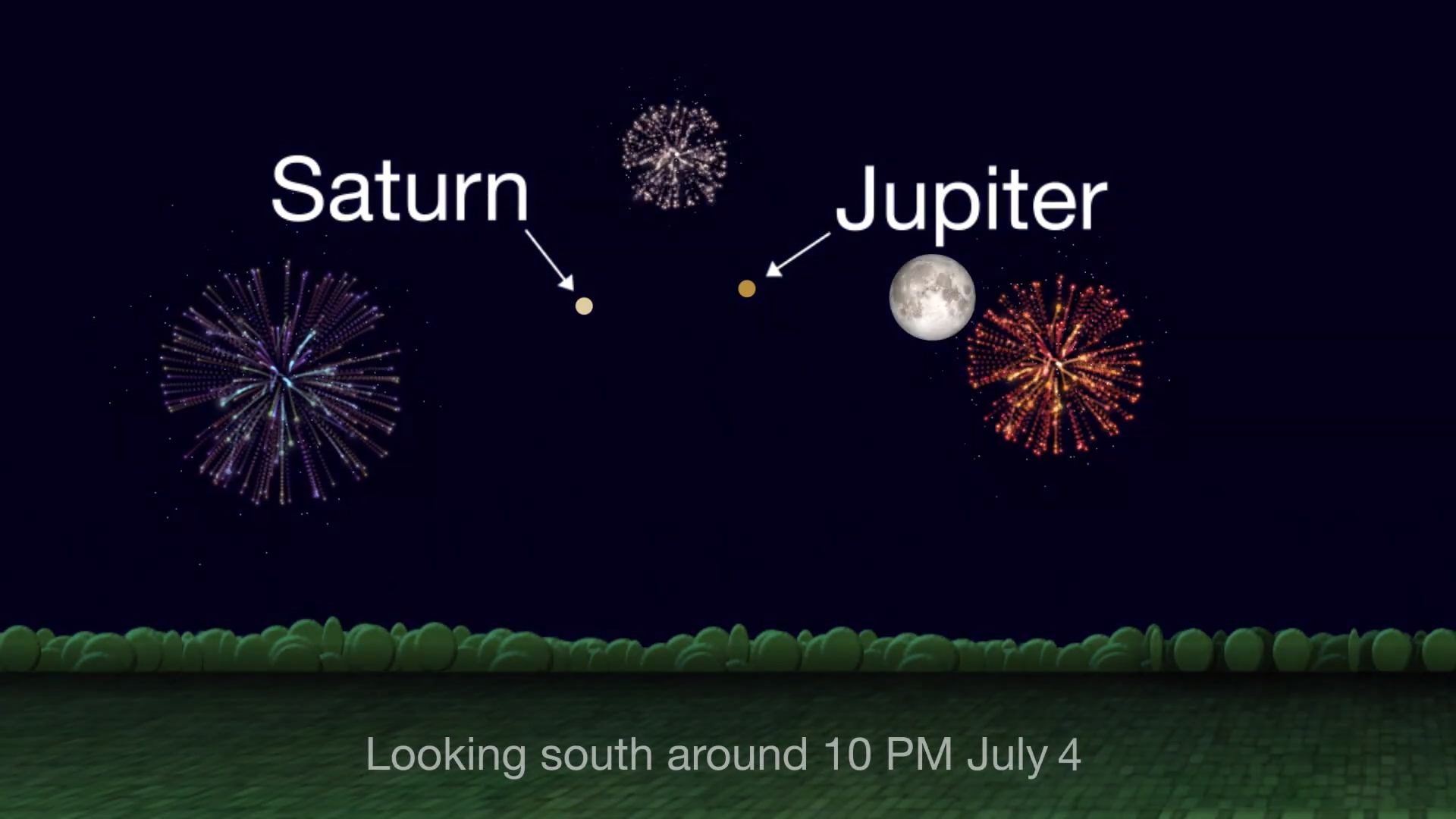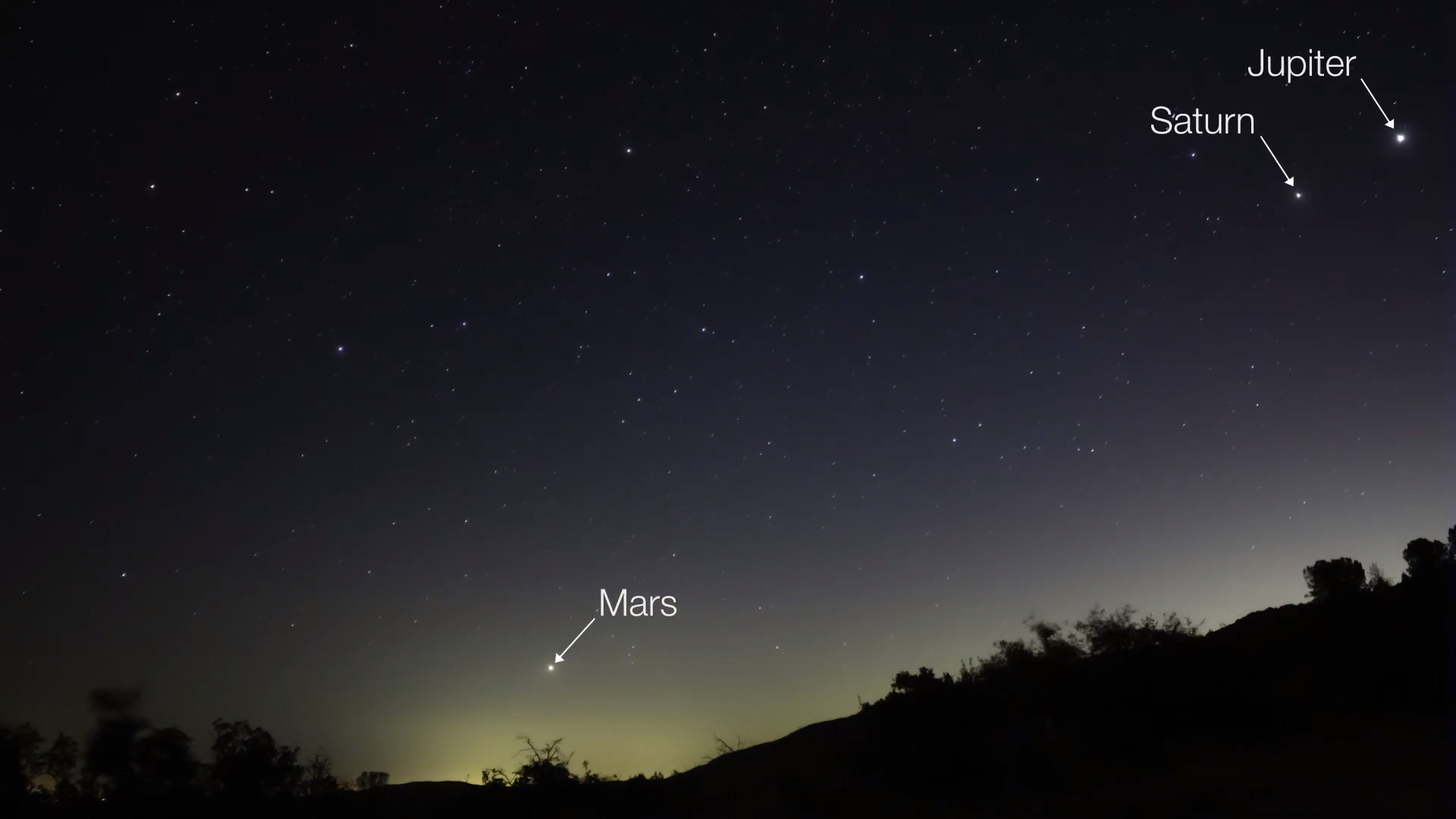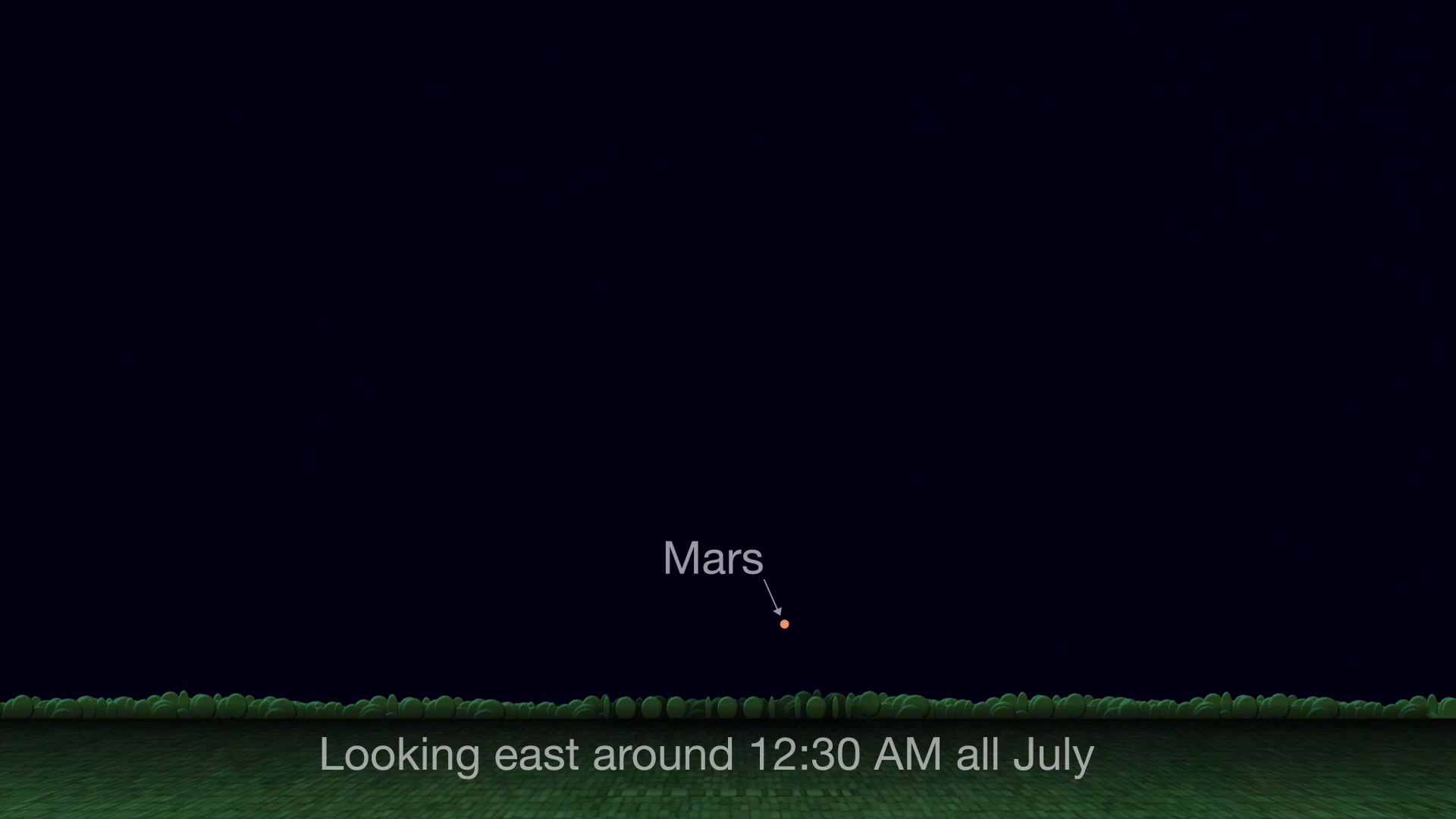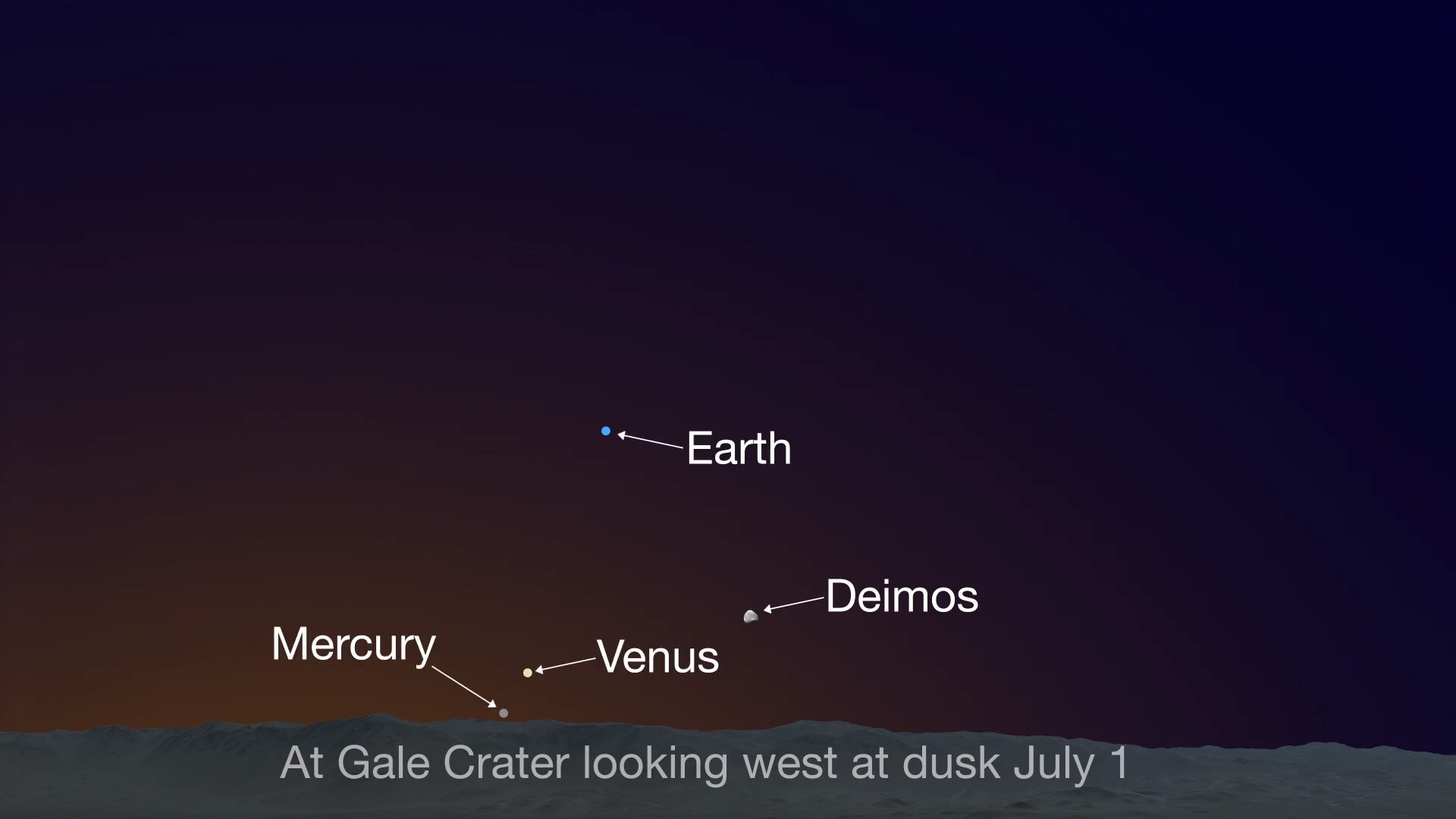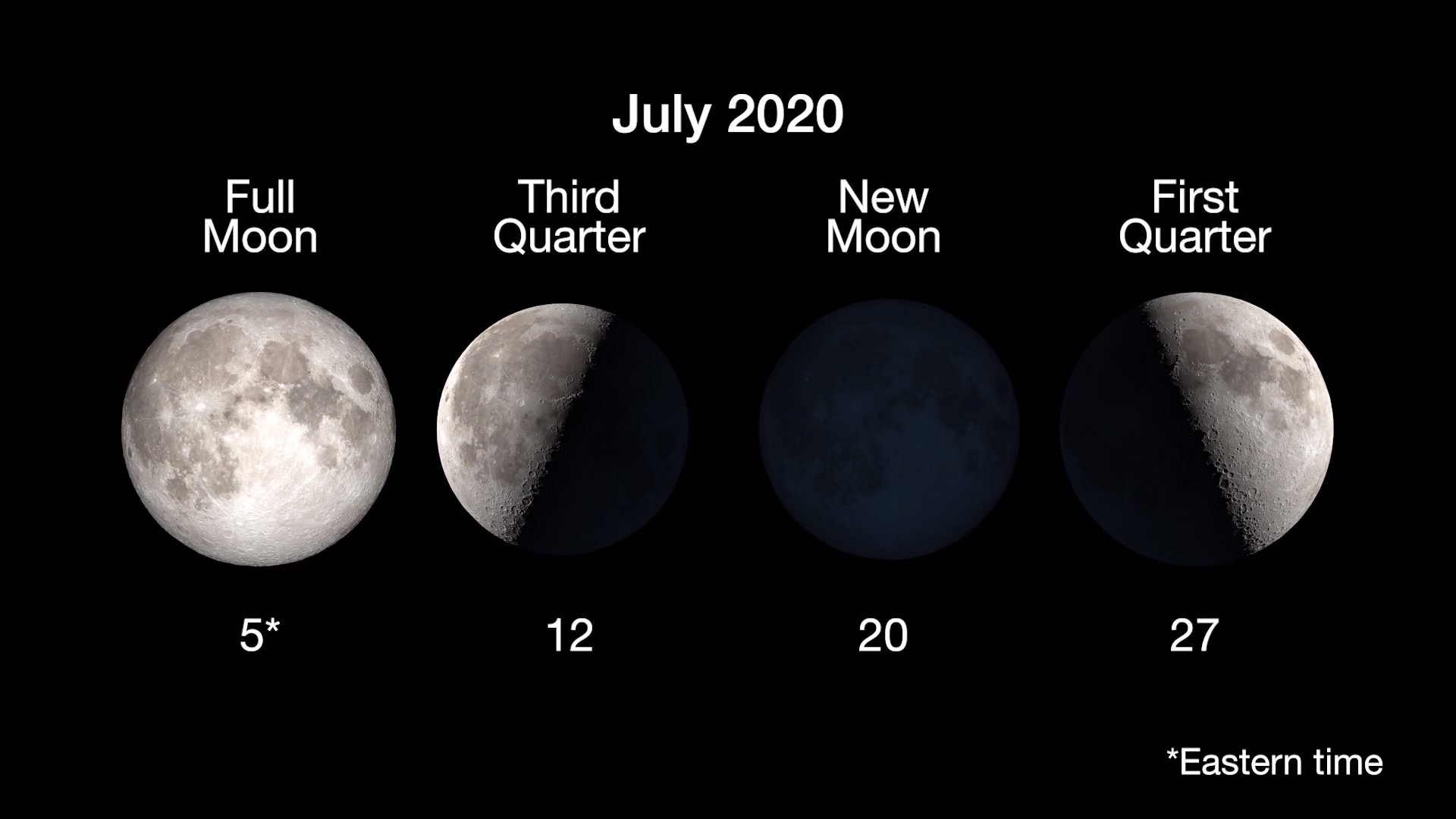What’s Up: July 2020 [Video]
| Language |
|
|---|
› More skywatching info for current month
Transcript
What's Up for July? How about some moons with those giant planets? Mars after midnight. And are the stars of Mars the same as ours?
In the first week of July, enjoy Jupiter, Saturn and the Moon late into the night. The trio rises in the couple of hours after sunset, and is well placed for viewing between about 10pm and 2am. They form their closest grouping over the July 4th weekend.
And as you're marveling at this celestial celebration, remember, you're not looking at just one moon, but well over a hundred. At present count, Jupiter and Saturn have 161 moons between them. You can see Jupiter's four largest moons with a basic pair of binoculars, and at least one of Saturn's moons with a basic telescope. Up close, these moons are richly varied worlds in their own right — with ice-covered oceans, volcanoes, deep chasms and one with an atmosphere and seas of liquid hydrocarbons.
NASA's Mars 2020 mission is planned to launch this summer, sending the Perseverance rover and the first-ever Mars helicopter to the Red Planet. So if you're a Mars exploration fan, this month is a great time to spot Mars yourself.
In July, Mars rises just before midnight and is visible until dawn. It's rising earlier now than it was a few months ago, making it easier for those who are more night owls than early birds. Just look low in the east after midnight for a relatively bright object with a distinct reddish hue. And for an extra treat, take a look on July 11 to find the Moon very close by.
You might not have considered it before, but would it surprise you that the night sky on Mars is quite similar to Earth's in many ways? Sure, there's sometimes a lot of dust in the thin air, and there are two little moons rather than one big one. But the stars we see from Earth are so very distant that they appear the same as seen from Mars, and you'd have no trouble finding your favorite constellations and asterisms like the Big Dipper. Plus, with no humans there (yet), there's absolutely zero light pollution to interfere with your view of the Milky Way!
One big difference would be the positions of the planets in the sky. And instead of a ruddy red planet, there would be a dazzling bluish-white one to try and spot while stargazing.
To see noticeable changes in the positions of the stars, you'd have to travel much farther than Mars, Jupiter, even Pluto. In fact, NASA's New Horizons spacecraft, speeding through the outskirts of the solar system, has only seen the slightest shift in the positions of a couple of nearby stars, despite being more than 4 billion miles away from Earth.
Here are the phases of the Moon for July. You can catch up on all of NASA's missions to explore the solar system and beyond at nasa.gov. I'm Preston Dyches from NASA's Jet Propulsion Laboratory, and that's What's Up for this month.
Images from this video
